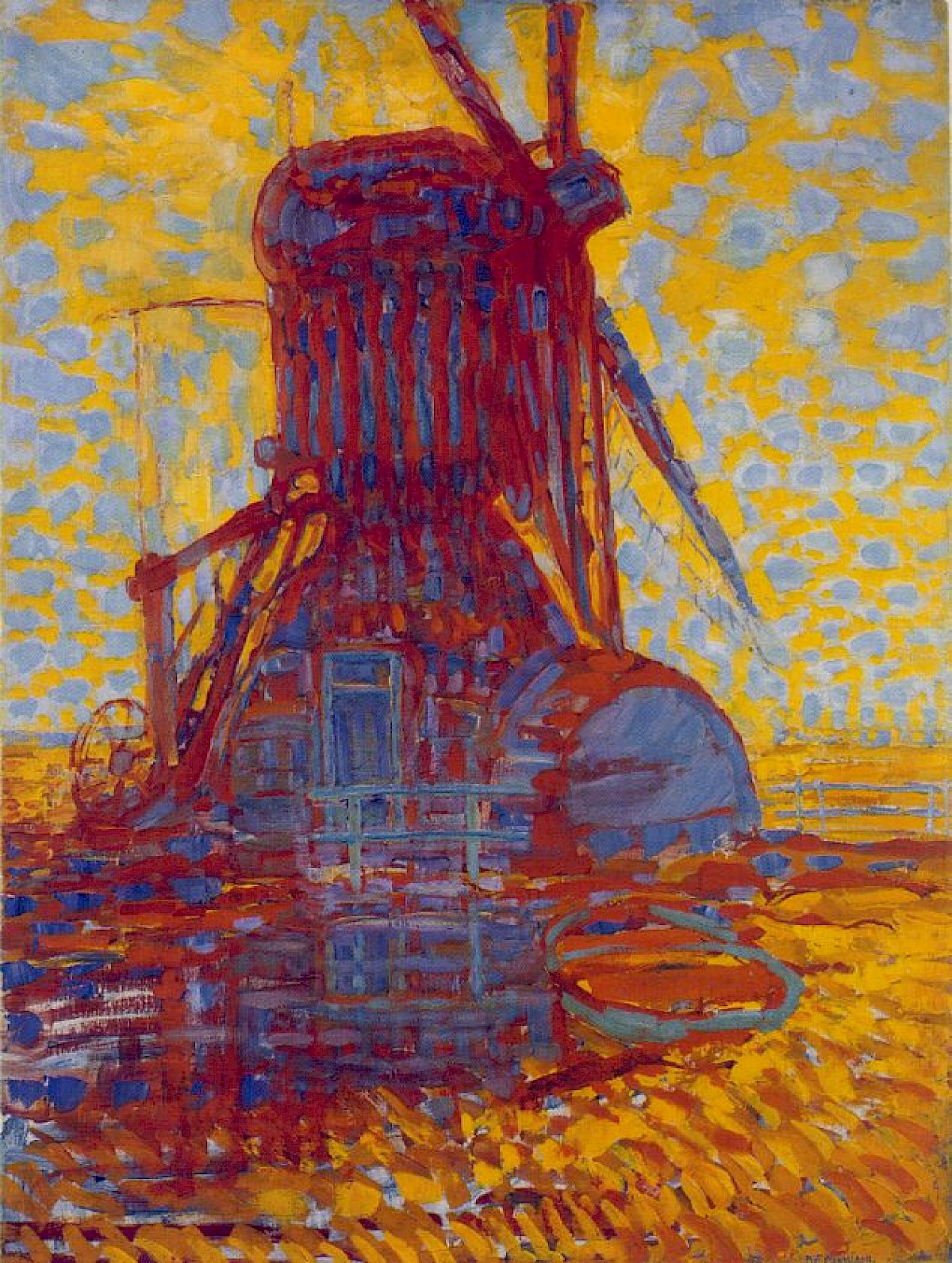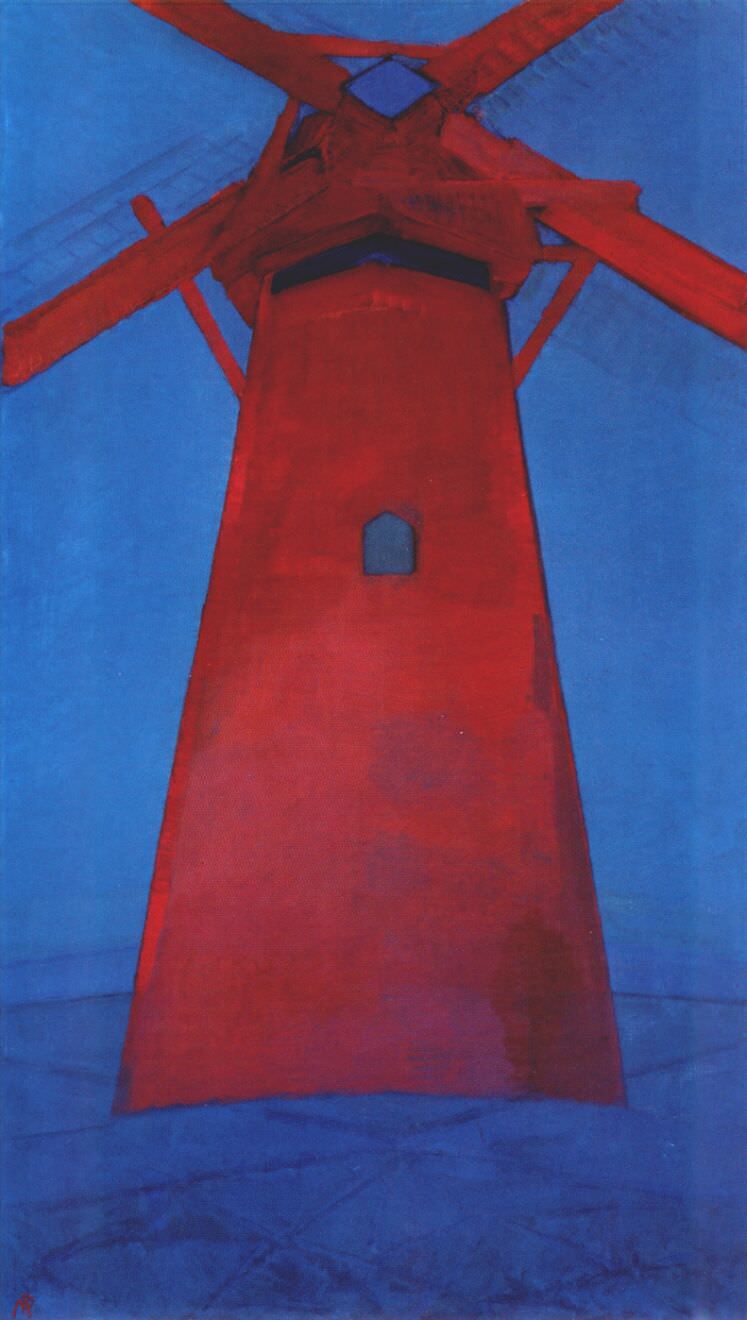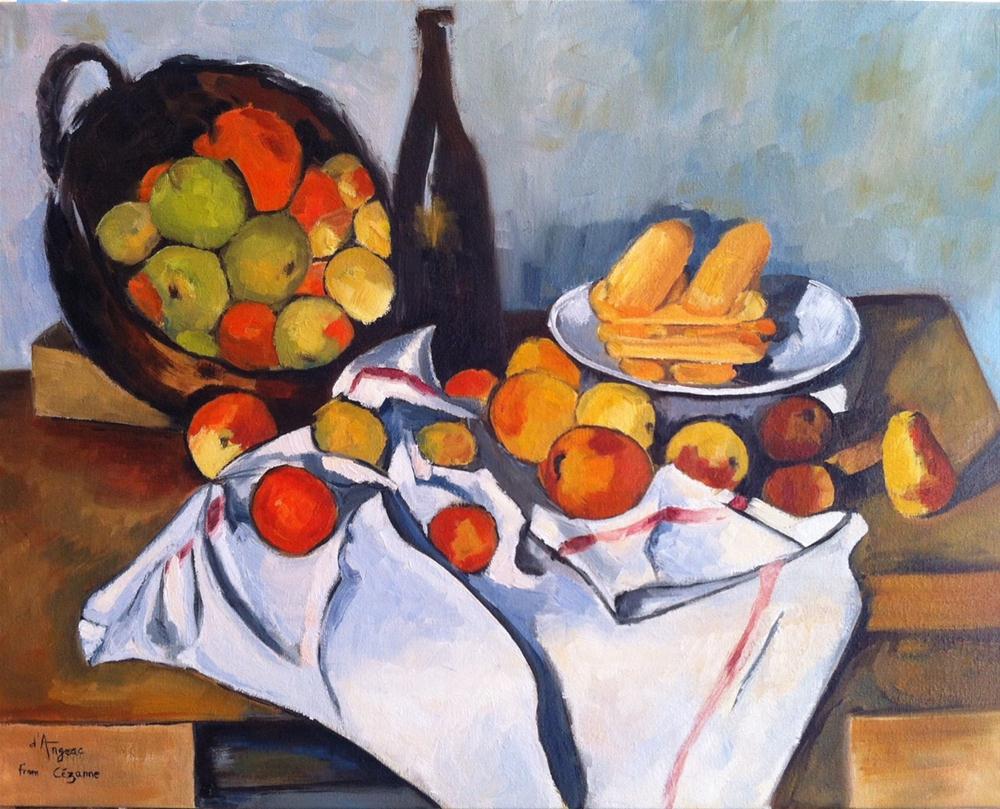Mondrian and Neoplasticism I
Dutch Art
The opportunity which lead Mondrian into Modernist could be couple of trips. 1908 he went to a village in Dutch and contacted Dutch Symbolism. ‘Which was the most avant-garde to be found in Holland at the time’, John described, ‘this genre introduced Mondrian into the Neoplasticism.’ (John Golding, 2000) After some visiting include Van Gogh retrospective, he was influenced and inspired to feel and express light with unnaturalistic and symbolic implications. His Mill in Sunlight can be the one of evidence.

Then he created The Red Mill, which has a strong perspective and color. We can see the exaggerated angle, the symmetric composition which make an intense in composition and colour. The architecture break the background out, as well as the red make contrast in the dark blue background. Furthermore, the window in the center of mill is also make a visual center.

Religion and Science
To understand the nature of thought, something esoteric, occult in the expression of painting, he was going to do more research spiritual.
... my work remains entirely outside the occult realm, although I try to attain occult knowledge for myself in order to gain a better understanding of things'
Theosophy, which was popular in 1890, kind of Western Buddhism, influenced Mondrian as well as Kandinsky. Theosophy pointed some thought about sprit and the absolution or illusory of objects, generally said. Mondrian was interested in this theory. It could inspired the principle of symbolism and expressionism he contacted before, and enhanced his thought about sprit. In same time, the Theory of Colour which supported by Goethe and the Platonic idealism of Hegel also influenced Mondrian, ‘even ultimately to confirm the premises of Mondrian’s art’, John wrote. As the result, he used essential colours: red, yellow and blue in his personal style, which came from Goethe’s theory.
It is interesting, that points Mondrian focus on. His spiritual thinking could be influenced by religional, metaphysical philosophies, but the colour he used are really reasonable, objective, which be proved by Goethe with a dialectical way.
Although he rejected Theosophy in the last, because he had went beyond to that, it is no doubt Theosophy introduced Mondrian to become a painter-philosopher. (John, 2000)
Mondrian and Cubism
In my view, Cubism could be the genre which significantly changed Mondrian’s painting style. He learned with Cezanne. ‘He learned how to give equal pictorial weight to every single area of the picture surface’, John wrote. In Cubism, the object could be divided as couple of segments, it could lose its dimension, because the viewpoint in Cubism would always change, so the perspective as also change. “Mondrian admired and influenced by Cubism, but he never became a Cubist”, John said. In Mondrian’s early Cubism works, the object lose all of dimension and shade, it become totally flat, that make different with general Cubism work.
If I describe Cezanne’s work, I could think that he used outline to make objects jump out of original perspective, objects become more independent, the shade and dimension is decreased intentionally.

In Mondrian’s work, the reality of objects is completely removed, a lot of lines are used to divide objects, and make them become flat.

That’s the guide of Cubism to Mondrian, the using of lines and the abstraction of object.